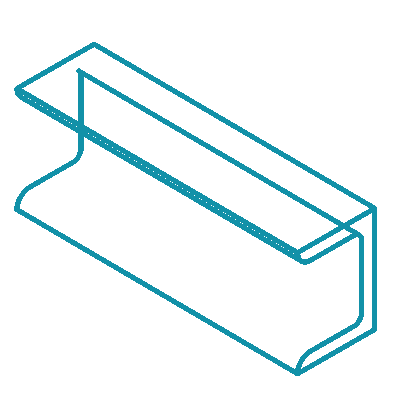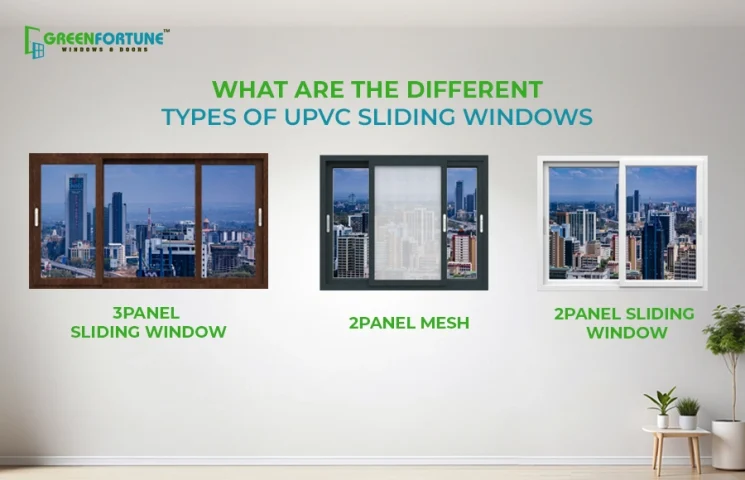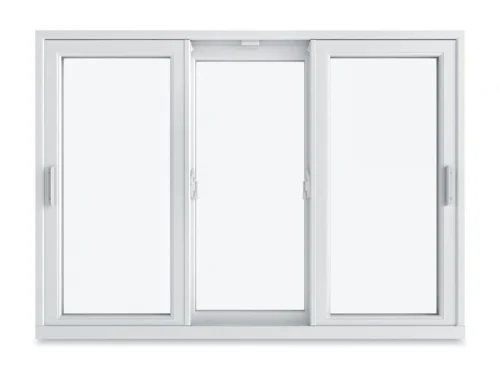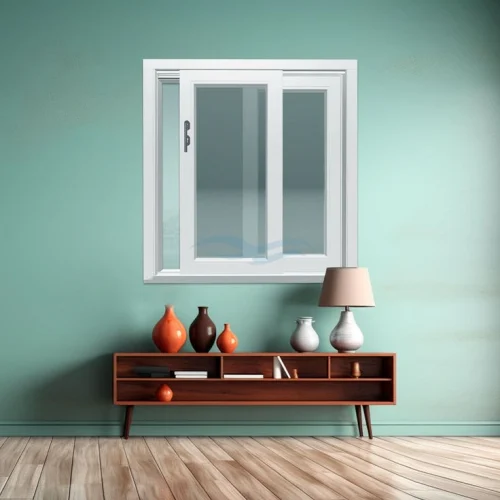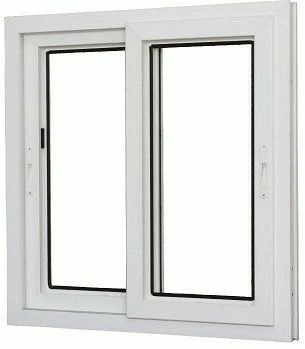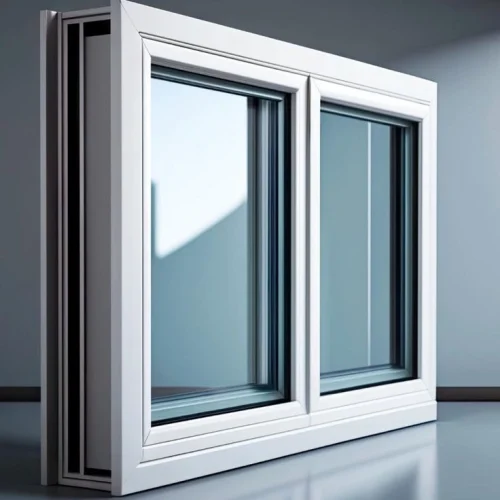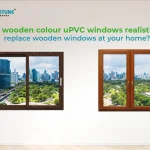
Can uPVC Windows in Wooden Color Realistically Replace Wooden Windows at Home?
October 4, 2024
Toughened glass window: How can it improve the safety of your home?
October 5, 2024From the selection of windows for your residences, uPVC sliding windows—along with other types of unplasticated polyvinyl chloride (uPVC) windows—will provide all sorts of options, like durability and energy efficiency with a modern makeover look. We will discuss the plethora of different types of uPVC windows in this blog post, ranging from sliding, casement, tilt-and-turn, or others, to choosing the right one for your home applications.
Table of contents
Sliding uPVC Windows
Two Track Sliding Window
The two-track sliding uPVC sliding windows come with two tracks that can either include two moving panes or one fixed and one moving pane sliding horizontally along a track. This is a streamlined design, whereby the opening of the window does not project into the room and hence saves the floor area where it is needed. Its simplicity makes a two-track system easy to operate, bringing about smooth sliding, and requiring minimal maintenance.
These uPVC sliding windows similarly appear neat, with clean lines and are cost-effective for medium-sized sliding window dimensions. No wonder they are gradually becoming many designers' choice of use in bedrooms, kitchens, or even living rooms of small sizes.
Three Track Sliding Window
In three-track or triple track uPVC sliding windows, there will be three parallel tracks. This design offers numerous ways to ventilate since users can open either one or both of the movable panes. The three-track system allows more flexibility and creates larger, unobstructed views when the panes are all pushed to one side. These windows offer more customizability and the third track can be used to install a mosquito mesh instead of another glass panel. Sliding three-track windows provide a correct solution to bigger openings or any space that needs more ventilation and wants modernization. This would make them perfect for living rooms, patios, and large openings where you not only want to add style but functionality.
Single Sliding uPVC Windows
Single sliding uPVC sliding windows have one fixed pane of glass and one movable pane that slides horizontally. This design is perfect for spaces where one desires to let in as much light as possible while the window profile needs to remain thin, sleek, and streamlined. This moving pane slides partially or fully open on a track without any extra space requirement.
Double Sliding uPVC Windows
Double sliding uPVC sliding windows have two moveable panes that slide horizontally, thereby providing more flexibility in ventilation. You can move both panes independently to have one or another partially or fully opened. The type is ideal for rooms where finer control over air intake is called for.
This design is tailored for larger openings where you want maximum versatility.
Multi-Slide uPVC Windows
These are multi-slide uPVC sliding windows with various panels sliding past one another; oftentimes, they stack to one side. This design is perfect for creating expansive views and somehow seamlessly connecting interior spaces to outdoor spaces. Multi-slide windows turn out very appropriate for large openings and even patio doors.
Explore other Types of windows as well!
Casement uPVC
Casement uPVC windows are hinged at the side and externally open like a door. The ventilation properties of these windows are excellent, making them perfect for providing clear and unobstructed views. Generally, casement windows come in various sizes and configurations, so they work well across many different architectural styles. In addition, casement windows have some other benefits—excellent security because of very good locking mechanisms.
Tilt-and-Turn uPVC Windows
Tilt-and-turn uPVC windows are designed to fulfill two functions. They may be tilted inward from the top for secure ventilation or turned wide open like casement windows, thus allowing flexibility on the amount of air that should enter and making them easy to clean. This design makes tilt-and-turn windows ideal for high-rise buildings or locations where cleaning is essential and convenient access is needed.
Bay and Bow uPVC Windows
The bay and bow uPVC windows are protruding structures from the wall that create a sense of space and allow more natural light into a room. Bay windows usually have three panes and take on the appearance of a projection that gives panoramic viewing. The bow window, on its part, is formed by four or more panes set in a curved formation mode. Both offer an architectural feature to your home apart from the increased inside space.
Fixed uPVC Window
Fixed uPVC windows are non-opening windows, usually applied to provide unobstructed views or enhance the appearance of any building. They work best where ventilation is not required, like high windows or areas with beautiful external views. This can be often used in conjunction with other types of windows that create a balanced design on many occasions.
Hybrid uPVC Windows Combination
These uPVC windows combine various styles in a single unit. This means you could have casement and fixed windows combined to gain functionality with a look that makes you pleased. Hence, combination windows are customized in terms of demand made upon design tastes and functional usages.
Why Choose uPVC Windows?
Other advantages of UPVC windows include zero maintenance, resistance to weathering, and excellent thermal insulation. Not only that, they can also be found in several different styles, different colors, and finishes to allow them to adapt to the décor of your home. With their resistance and energy efficiency features, uPVC windows are certainly going to be a very smart investment for any homeowner.
Summary
Different styles of UPVC windows that will suit every requirement and taste are available. From practical Sliding window types and versatile tilt-and-turn designs to bay and bow windows, there's a style of uPVC that is sure to enhance the functionality and look of your home.
Discover GreenFortune, Your Partner in Quality uPVC Windows and Doors
At GreenFortune, we are proud to offer high-quality uPVC windows and doors at affordable prices. We offer and install a variety of window types for all homes with both durability and aesthetics in mind.
Contact us to find out more about the uPVC window design that we offer. Whether you are renovating your existing home or building a new one, partner with us to elevate the comfort levels and energy efficiency in addition to the style quotient of your space provided by our superior-quality uPVC windows.
Frequently Asked Questions
Q1: What are the different types of uPVC sliding windows available?
A: The most popular types of uPVC sliding windows include two-track sliding windows, three-track sliding windows, single sliding windows, double sliding windows, and multi-slide options. Each offers unique benefits in terms of ventilation, space-saving, and design flexibility.
Q2: Which uPVC sliding window type is best for small rooms?
A: For smaller spaces like kitchens or bedrooms, single sliding and two-track uPVC sliding windows are ideal. They operate smoothly without occupying extra space, making them perfect for compact home layouts.
Q3: Are three-track uPVC sliding windows better for ventilation?
A: Yes. Three-track uPVC sliding windows provide excellent ventilation, as they allow multiple panes to slide and can include a mosquito mesh panel. They are great for large openings like balconies, living rooms, and patios.
Q4: How are double sliding windows different from multi-slide uPVC sliding windows?
A: Double sliding uPVC sliding windows allow both panes to move independently for flexible airflow. Multi-slide uPVC sliding windows, on the other hand, feature multiple panels that slide and stack, offering a wide, unobstructed view and seamless indoor-outdoor transition.
Q5: Are uPVC sliding windows energy-efficient?
A: Absolutely. Most uPVC sliding windows are built with multi-chambered frames and are compatible with double or triple glazing. This helps in maintaining indoor temperature, reducing energy consumption, and lowering electricity bills.


